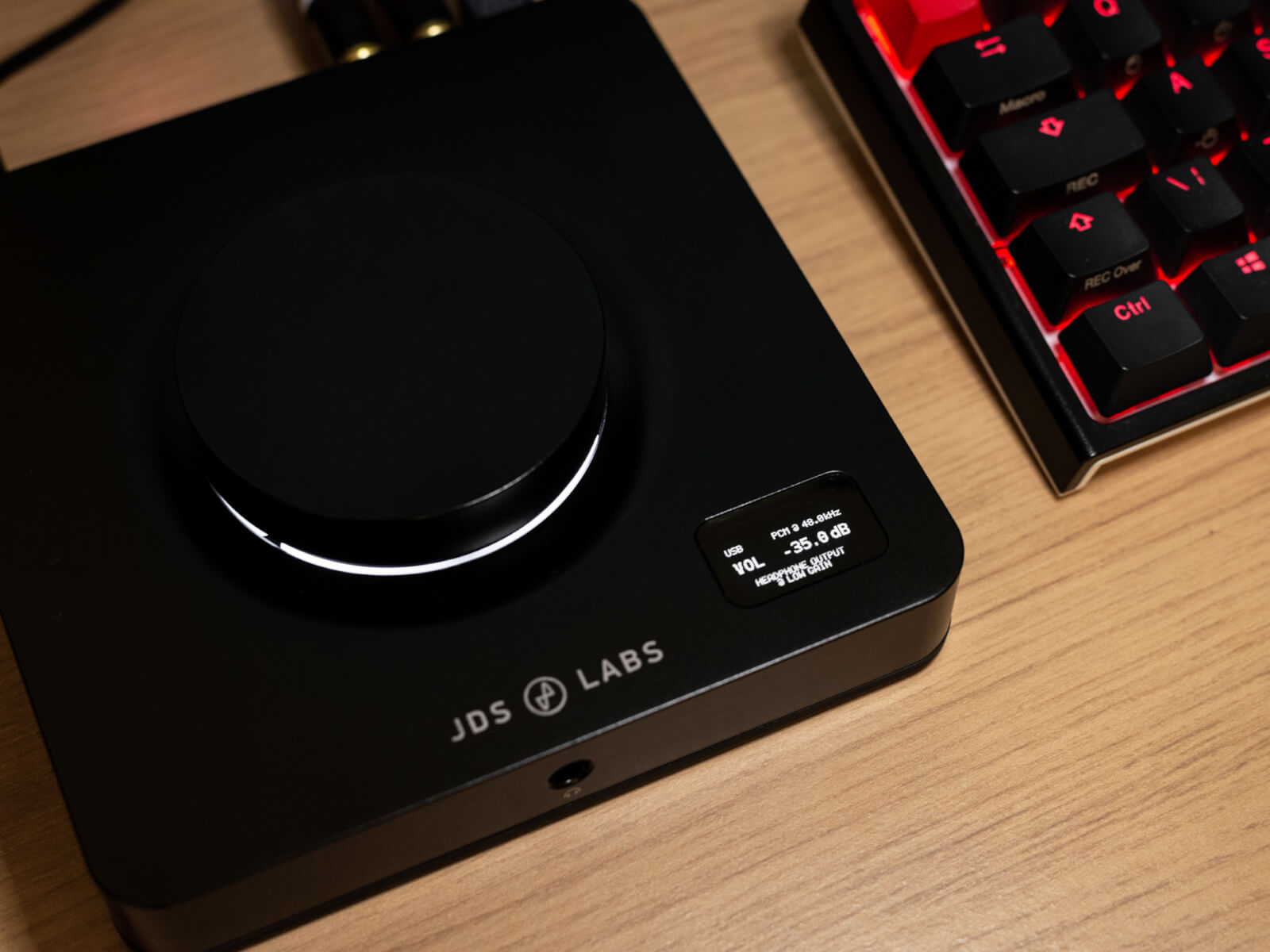The all new Element III isn’t just a simple refresh. It was built from the ground up around a new DAC chip and offers up the same excellent sound signature people have come to love in an improved package.

[jnews_review_shortcode review_show_breakdown=”true”]
As a result of the AKM factory fire late last year, JDS Labs had to refresh the Element II. So they initially decided to develop the Element II+ with a Cirrus Logic DAC chip. However, increasing lead times from Cirrus Logic forced them to go down the ESS Sabre route and ended up developing the all new Element III. (prototypes with a CS and ESS Chip were developed alongside each other). Due to these supply chain issues, JDS Labs decided to essentially cancel the Element II+ and focus on something completely new. Something that was audibly better, The Element III.
Volume Control
One of the main differences between the Element II & III is the volume knob. It may look the same, but it now uses a digital attenuator instead of the analogue volume pot of old. This means you get audibly perfect channel balance right down to -127.5 dBFS. In turn, this allows you to listen at lower volumes and still get the same excellent sound quality. There is a slight drawback to this though as the new Element III no longer has an analogue input due to the digital nature of the volume knob. But they have added an optical input alongside the USB. This was also done to achieve perfect channel balance and also allow them to implement auto-gain.
The Element III has both USB and Optical inputs and can still be used as a pre-amp via the RCA outputs
OLED Screen
There is a small OLED screen on the Element III that shows you some key things like the volume and output selected (HP or pre-out). This is a really handy feature that was missing from previous models.The power for the screen is also separate to the audio channels to make sure there was no impact on the audio quality. There has allowed for a menu, where you can change the brightness, timeout interval, Volume knob LED behaviour and DAC tuning. (Filters, DPLL bandwidth, S/PDIF De-Emphasis and Harmonic compensation).
Auto Gain
Auto-Gain is something really interesting with the Element III. Instead of a separate gain button the amp automatically changes to high-gain (+13.5dB) when the volume is pushed beyond the 0 dBFS threshold. At that point it also compensates volume (-13.5dB) for a near seamless transition. This means no more toggling between high and low gain to get the right listening levels.
As you can see from above, JDS Labs have implemented a lot of new features here. There are also few more geeky ones if you want to check them out (alongside measurements): JDS Labs Element II Benchmarks
Compatibility
As mentioned above, The Element III is a DAC/Amp combo that works with Optical and USB inputs. Output wise it has RCA output for connecting to an external amplifier where you can use the Element III to control the volume. Or even have it set at 0 and use it purely as a DAC. On the front it has a 6.3mm headphone output. The internal amplifier is excellent and provides more than enough output power for most headphones on the market. From sensitive IEM’s to 600Ohm hard to drive dynamic driver over-ears. The only headphones that need more power are low sensitivity planars like the HiFiMAN HE6/Susvara.
Sound
JDS Labs know what they are doing and have implemented changes that have benefitted the sound. With the side effect of slightly better spec on paper too! (inaudible). I have been using an Element II for the last 2 years in my desktop setup. Before that I had the original Element too. They are excellent devices, and perfect for powering all different headphones without issue. they also make the perfect reference point and one that I am very familiar with.
The Element III brings things up a notch though. It still has that signature JDS Labs sound that is clean, linear and effortless but this time it feels smoother and less clinical. The perfect channel balance is something that is noticeable and a welcome addition to already excellent devices. You can now listen with even the most sensitive IEM’s and have zero hiss, zero noise and also zero channel imbalance at low volumes. Not that hiss/noise were ever issues before.
It is natural, neutral and extremely clean sounding which works wonders when it comes to feeding clean power to your headphones.
The Element III doesn’t want to impart a sound signature. It is natural, neutral and extremely clean sounding which works wonders when it comes to feeding clean power to your headphones. It doesn’t colour the sound. Nor will it flatter poor recordings or making things easier on your ear. However, pair it with a pair of headphones you truly enjoy the signature of and voila. You need to try it!
Where to use
There is a great opportunity for studio users to put the JDS Labs Element III in their system. It provides an exceptionally clean sound signature for recording and referencing work. The design is perfect for desktop users. I personally use it for listening to music and also when gaming. The volume knob is so easy to use. I also often use it as a DAC only into another headphone amplifier. And it must be said, the DAC section is very well implemented, sounding very transparent.
[jnews_review_shortcode review_show_price=”true”]